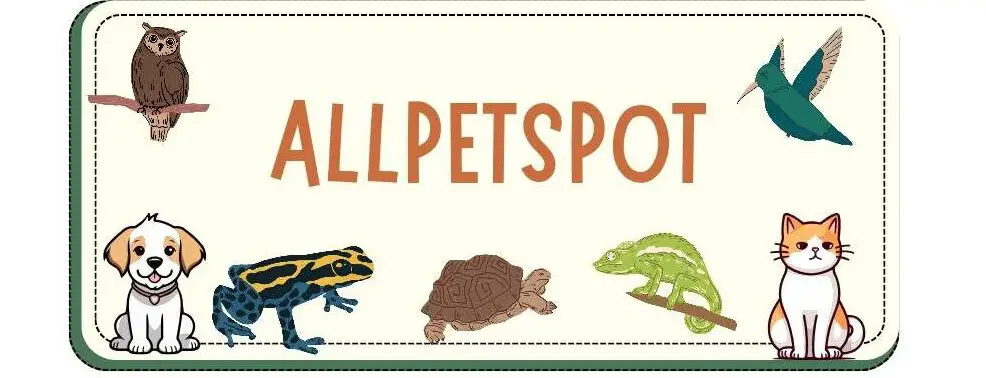Rat terrier shedding can become an issue when they begin to shed excessively during a certain time of the year or season.
Before or during this season there are certain activities you should be carrying out to reduce rat terrier shedding.
I will be discussing these activities and some common causes of excessive rat terrier shedding you should know.
Before we continue, let me quickly answer the most common question regarding rat terrier shedding…
Do rat terriers shed a lot
Rat terriers do shed throughout the year, but the most are shedding in the spring and fall, with spring being the worst. Rat terriers are hence regarded as a shedding breed of dog.
All dogs shed to some extent, but it is a natural process that protects their skin and helps them regulate their body temperature.
Vitamins, grooming, and diet can all help to lessen excessive rat terrier shedding, but it cannot be stopped.
Read more: 10 Reasons For Rat Terrier Shaking.
Causes of excessive rat terrier shedding
The most common factors contributing to excessive shedding in rat terriers are poor diet, infrequent brushing, parasite infestations, allergies, and the time of year or seasonality.
Some of the most prevalent causes of excessive shedding in rat terriers that you should be aware of include the following:
1. Fluctuations of hormone
In dogs, hypothyroidism, a hormonal disorder, can result in significant hair loss.
The rat terrier’s thyroid glands are impacted, which prevents the production of the hormone thyroxine, which regulates metabolism.
Weight gain, fatigue, losing hair, a thin coat, discolored patches on the skin, and skin discoloration are all side effects of this condition.
If your female rat terrier hasn’t been neutered, her heat cycles may have an impact on how much fur she sheds all at once.
You could see her shedding more hair at the end of her cycles.
All of these types of hair loss are categorized as hormone shift-induced hair loss.
2. Response to allergies
A rat terrier’s skin may become irritated and shed as a result of allergies to specific foods or environmental irritants.
Your rat terrier may scratch, lick, or bite himself out of the allergy, resulting in significant hair loss.
A number of items, including food, dust, medications, and insect stings, can make rat terriers allergic.
When a rat terrier comes into contact with anything they are allergic to, their skin reacts and sheds hair as a result.
This is a rare kind of shedding that only sometimes takes place. Keep your rat terrier away from any items that can be allergy triggers.
Read more: 9 Signs Of Rat Terrier Separation Anxiety With Tips.
3. Nutritional imbalance
A rat terrier’s hair will come out, a condition known as shedding if their diet is unbalanced. Malnutrition affects rat terriers in a similar way to how it affects people.
Whether it’s winter or spring, if you notice any especially heavy shedding after changing your rat terrier’s food, switch back or speak with a veterinarian.
The vitamins and minerals needed to maintain healthy skin, robust hair follicles, and minimum discharges are included in balanced dog food.
It has been demonstrated that omega-3 fatty acids aid in the development of healthy hair in rat terrier dogs, thus including them in their diet is always a smart idea.
Wet food is crucial to the survival of rat terriers since dry skin or dehydration can lead to unintended hair loss in these animals.
4. Pest attack
Outside-going rat terriers can get fleas, mites, and lice, but the infestation causes them to shed a lot.
Excessive shedding is one of the problems that might result from one bite from one of these insects.
Rat terriers become irritated by bug bites, thus even if there won’t be much shedding, this bite could cause it.
If your rat terrier is parasite-infected, she will continue to shed the parasite until it is completely gone.
As a result, the dog may get agitated and scratchy and, in rare instances, develop bald patches.
Keep your rat terrier away from fleas as they can cause serious allergic responses and excessive shedding in them.
5. Time of the year
Seasonality impacts the pace or quantity of rat terrier shedding, making the time of year one of the primary factors.
In comparison to the winter, rat terrier hair sheds significantly more in the spring.
Therefore, it makes fair to infer that the season has an impact on rat terrier shedding.
Rat terriers shed their winter coats in the spring to protect themselves from the summer heat, and they grow new hair in the summer to protect themselves from the winter weather.
Keep your rat terrier’s temperature down in the spring since the warmer weather causes them to sweat less.
If you don’t take care of your rat terrier throughout the summer, you’ll be shocked at how much it sheds.
6. Rat terrier age
Between the ages of five and seven months, rat terrier puppies are considered to have a puppy stage during which they miscarry.
You may counter that older rat terriers lose more hair since they are bigger and have more hair on them.
Over the age of eight, rat terriers are more prone to experience health problems, which can result in hair loss.
When rat terrier puppies outgrow their puppy coat, which takes place at roughly four months, they shed significantly more.
Then, until they reach maturity, they will shed heavily.
You should be on the lookout for rat terrier dying symptoms such as excessive shedding on sleeping areas in old age.
7. Skin disease or bacterial infections
Significant hair loss in rat terriers can be brought on by skin conditions, bacterial infections, fungal infections, and infestations.
These medical conditions typically cause excruciating pain as well as hormonal abnormalities that result in hair loss.
Salmonella and other bacterial illnesses can be acquired by the ingestion of raw foods, such as raw chicken.
If your rat terrier comes into touch with mold or other forms of fungus, it may get a fungal infection, which might be the root of the issue.
Remember that rat terrier are inquisitive dogs that will investigate whatever they can discover in the cracks of your house.
Make sure your rat terrier doesn’t breathe in ground spores when outside and that the areas where he spends time are mold-free.
8. Alterations in body temperature
Excessive shedding should happen when a rat terrier’s body temperature rises over average (101 to 102.5 degrees Fahrenheit).
Therefore, do not overwork your rat terrier; a daily stroll of 15 minutes ought to suffice. You’ll have hair all over your house if you overwork them in the heat.
Keep an eye on their body temperature and keep them away from anything that might make it rise.
An excellent example is playing with your rat terrier in the scorching sun.
Given their size, a rise in body temperature might result in respiratory issues that would induce excessive shedding.
Read more: 9 Tips On How To Discipline A Rat Terrier.
How to control rat terrier shedding
The most popular and efficient methods for reducing excessive rat terrier shedding are listed below:
1. Regular brushing
Regular brushing for your rat terrier might be once daily or twice to three times per week for your corgi.
Given that they have undercoats, regularly brushing your rat terrier will assist to remove dead, trapped hairs.
Regular brushing also helps to eliminate debris from your rat terrier’s skin and disperse natural oil.
Brushing your rat terrier often is one of the greatest methods to remove stray fur from his coat and stop him from over-shedding.
2. Bath your rat terrier once in a while
Bathing your rat terrier helps to keep its skin clean, which is important for shedding, as well as reduce its body temperature.
Ask your veterinarian for the right shampoo for your rat terrier, and then carefully adhere to the instructions.
Dry your rat terrier’s skin thoroughly after washing; allowing the skin to dry naturally will lead to skin problems.
It is quite risky to leave your rat terrier’s skin moist since it may result in parasite attacks.
Are you aware that if your rat terrier is exposed to water for a prolonged amount of time, it may begin to smell.
As a result, be sure to allow your rat terrier to air dry after bathing it.
3. Provide high quality dog food
High-quality, nutrient-dense food helps keep your rat terrier’s skin and fur healthy and prevent excessive shedding in rat terriers.
Mango, grilled salmon, apples, bananas, and bananas are all excellent human snacks (in moderation).
Remember to maintain and replace their water dish since staying hydrated is important.
To guarantee that even the slightest hair loss on the inside is maintained to a minimum, give your rat terrier a balanced diet.
4. Introduce supplements to your rat terrier food
In addition to giving your rat terrier good dog food and treats, you can supplement their diet with vitamins to ensure a healthy coat.
Look for supplements with linoleic acid, flaxseed oil, and omega 3 fish oils (sometimes called omega fatty acids).
Omega-3 fish oils are very helpful for maintaining the health of your rat terrier’s skin and coat as well as preventing hair breakage, which can make them shed more frequently than usual.
5. Avoid dehydration
To avoid dry skin, which also helps to reduce your rat terrier’s body temperature, your rat terrier should always have access to clean drinking water.
This is crucial because dehydrated dogs shed more than usual because of their dry skin and hair.
The likelihood of hazardous bacteria being swallowed is reduced if your dog’s water bowl is kept clean and full.
Make sure your dog is only drinking pure water by keeping an eye on their water dishes.
Dehydration can result in shedding in addition to health problems.
Make sure your dog always has access to fresh water as a result.
If you are having difficulties getting your dog to drink enough water, try one of the following methods:
- Their lunch should include water.
- Give them some ice cubes if you have some handy.
- Give them a present and congratulate them after they finish their drink.
- Their water bowl should be placed close to their bed or a favorite lounging area.
6. Don’t give any stale food
Rat terriers may have gastrointestinal upset after consuming table scraps or stale food, which can lead to excessive shedding.
Do you know that allowing your rat terrier to eat food crumbs off the floor might get them ill with bacteria.
It is not a good idea to let your rat terrier eat off the ground; instead, give your dog food in a clean container.
Don’t let your rat terrier steal food off the table while you’re eating; it’s not a good idea.
Keep them away from table leftovers and old food since rat terriers’ stomachs are delicate and they can vomit if they consume them.
7. Regular medical check-ups
This is a crucial step to take since rat terrier shedding can be brought on by a variety of medical disorders, so it is necessary to consider how to avoid shedding in this situation.
Always consult your veterinarian before making any decisions, and have your rat terrier regularly assessed.
Summary for rat terrier shedding
Here is a summary of the complete article on how to control or stop excessive rat terrier shedding:
- Give your rat terrier a nutritious diet.
- Rat terrier shedding may be reduced by weekly brushing using de-shedding equipment.
- A daily stroll of 10 to 15 minutes might help with regular exercise.
- For your rat terrier’s shower, use a high-quality shampoo that has been authorized by a veterinarian.
- Ample water should be provided to your rat terrier.
- With your veterinarian’s consent, think about giving an omega-3 supplement.
- Get rid of ticks to avoid bites that could cause rat terrier to shed.
- For dog hair, use a blower.
- For your rat terrier, use an air purifier to remove pet hair and dander.
- Lice and mite infestations on your rat terrier may be controlled and avoided.
- Never ever alter the rat terrier’s diet on your own without first getting permission from the vet.
- Use high-quality dog food prescribed by a licensed veterinarian.
- Set up routine medical checkups.










